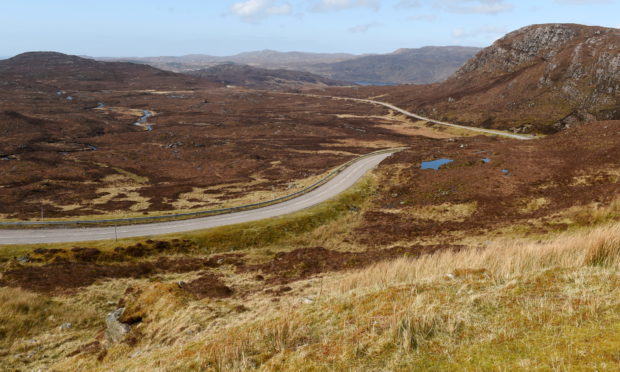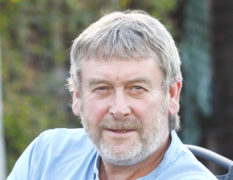In December 1992, the Assynt Crofters secured ownership of the 21,000 acres where their people had lived for generations. Unbeknown to them, they had just launched the modern community land movement.
A public meeting was called that night in Stoer Primary, to mark the successful buyout. Campaign leaders entered to great applause. One was carrying a book which he said had inspired them.
It was Mightier Than A Lord by Iain Fraser Grigor. It not only addressed the injustice suffered in the 19th-Century Highlands and Islands at the hands of evicting/clearing landlords, but also the crofters’ campaign of resistance. This heralded the Crofting Act of 1886, and the security of tenure which meant human voices would still be heard in some Highland places.
An important book, it contributed significantly to public understanding of the debate over Highland land. Its author was not a typical academic historian. Fraser Grigor was as much at home on a fishing boat working in the Minch as he was trawling through records in the National Library.
Raised on a croft in Morar, he had studied economics and history at Strathclyde and Glasgow universities and trained as a teacher.
He was also a journalist, writing and reporting for many Scottish newspaper titles and the BBC. He is possessed of an original and indefatigably inquiring mind.
His papers are held by Sabhal Mor Ostaig, Skye’s Gaelic college, including “Nineteen large-format bound volumes, comprising around 1,500 pages and 5,000 items”. But too few in Scotland today know of him.
He has written novels and added to his non-fiction work. Highland Resistance: The Radical Tradition In The North, was published by Mainstream in 2000. In 2011, the ebook collection of 35 essays, some highly controversial, appeared entitled A Nation In Want Of A Grievance.
He has just published his latest work, on a subject which may surprise. He edited and introduces The Free Church In The Andes. It tells the little-known story of missionaries from the Free Church of Scotland who went to Peru last century.
One of them was his aunt Rebecca (Netta), his mother’s sister. They were from the old Clan Fraser country in the Braes above Beauly. It was a Free Church home.
“… there were but four books – a Gaelic Bible, an English Bible, a volume of Spurgeon’s sermons, and a copy of John Bunyan’s Pilgrim’s Progress.”
She had trained as a nurse and a midwife. In 1946, aged 30, she headed for Peru to the Free Church mission hospital in Moyobamba.
She did not fit the popular image of a missionary. At one point she kept a puma as a pet, taking it for a walk on a chain. It didn’t like local dogs.
Her son later recalled: “If one came within reach, the puma would kill it instantly with a casual side-swipe of a paw. After a few such incidents, my mother decided that the time had come for her pet to be rehomed.”
She had married another missionary, Dr David Milnes, and moved to a mission in southern Peru, where his fluency in Quechua (indigenous language family of the Inca Empire) could be put to good use.
Initially Peruvian doctors had been only willing to work in the coastal cities and not in the mountains, where the hospitals were run by untrained nuns.
The missionary doctors had to be revalidated. Dr Milnes sat 27 papers (in Spanish), a process interrupted by a revolution with the army and navy on opposite sides. These men and women who had gone out to Peru because of their faith, helped address the profound public health and educational challenges in the remote mountain communities.
You do not have to be a believer to admire the missionaries’ sheer determination. They faced a physical geography that could require weeks of travel, sometimes by horse or donkey, on occasion ascending to 13,000 feet. Some lived with little sanitation. They suffered illness. Netta herself had suspected pneumonia while her husband was away.
There were many other missionaries. Those from the Free Church were most commonly from Gaelic Scotland. After 1900, when it lost most of its people to the new United Free Church, nine of its 11 presbyteries were in the Highlands and Islands. Meanwhile, Glasgow actually included Inveraray and Arran, where many still spoke Gaelic.
Missionary work was not new to Scotland’s Presbyterians. The Church of Scotland was in Africa, India and throughout the British Empire.
But there had been other empires which had called, as the book underlines: “In August 1909, there is a prophetic editorial in the (Free Church) Monthly Record referring to Peru and suggesting, inter alia, that the native people of the Peruvian Andes, ‘had been better off under the Inca than the Spanish..’. ”
The Monthly Record was the main source for this compelling book. Its contemporary reports, “snatches from the jaws of oblivion” these Highland voices in the Andes. We are the better for hearing them.
David Ross is a veteran Highland journalist and author of an acclaimed book about his three decades of reporting on the region

